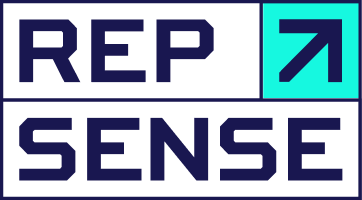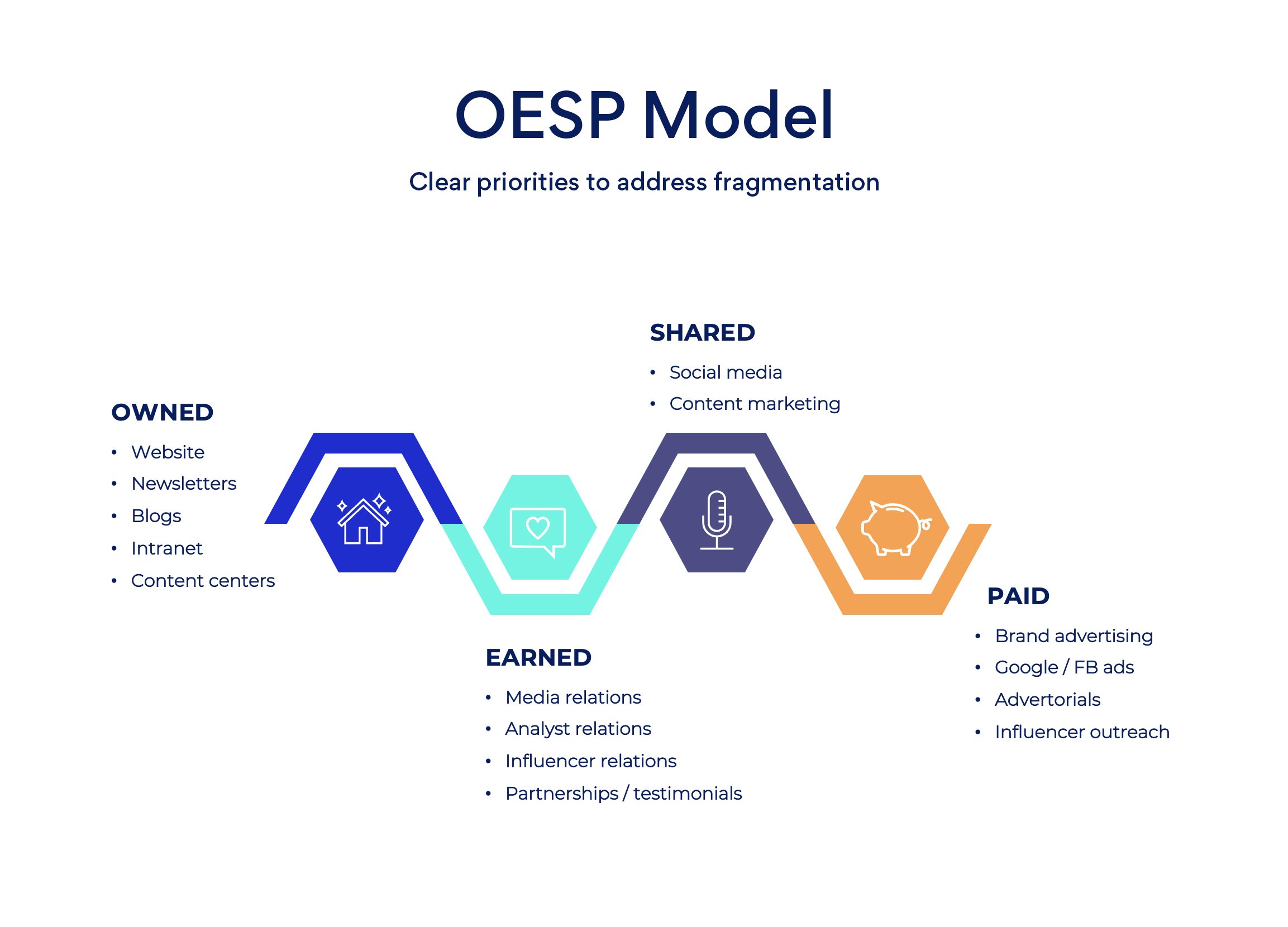PESO Model Needs an Upgrade. What's next?
In recent years, the PESO model has become crucial for strategic brand communications. This framework helps plan campaigns and optimize efforts for the best results.
PESO was designed to boost the number of communication activities and make all channels buzz with news about your brand. Making noise online is a necessary first step for building your online reputation. However, how can your brand send the right signal to the journalists and other stakeholders?
Repsense team has developed a unique NIIS communication management model that measures not only the quantity but also the quality of communications.
Before exploring the benefits of NIIS, let's look at the legacy behind PESO and other earlier communication models.
The beginning: ATL and BTL marketing
People working long enough in advertising and communications still remember the abbreviations ATL (Above The Line) and BTL (Below The Line) marketing. It was first used in 1954 when Proctor and Gamble began paying advertising firms separately from other suppliers who dealt with direct marketing. In the 20th century, it became the widest-used communication planning tool.
ATL originally included all hard-to-measure communication activities and paid media: TV, radio, print, and outdoor advertising. BTL was understood as direct marketing efforts: mailing, coupons, and merchandising.
With the rise of PR and digital advertising, the lines became blurry. This model has lost its attractiveness.
PESO model for addressing fragmented media
PESO arrived more than half a century later when in 2009, Gini Dietrich of Spin Sucks created and patented it. PESO describes categorizing the various activities companies take to interact with consumers using Paid, Earned, Shared, and Owned media. It quickly took the place of an outdated ATL / BTL method.
PESO model reflected the explosive growth of brand-related noise. Different channels, devices, and content types meant consumers faced hundreds of thousands of messages daily. This media fragmentation meant that consistently communicating a brand or reputation became an immense challenge.
PESO combats the divided attention by adapting one unified message on multiple channels:
Paid media – social media ads, sponsored content, media advertising, paid influencing, and publishing.
Earned media – media coverage, thought leadership, influencer relations, sponsorships, and partnerships.
Owned media – websites, content marketing, webinars, and email marketing campaigns.
Shared media – organic social media, such as LinkedIn posts, tweets, and reviews.
Paid, Earned, Shared, and Owned media – the classic PESO model by SpinSucks
OESP model for media relations and integrated marketing
OESP is an iteration of the PESO model. It is a good reminder of how communication should be structured in the age of fragmented media. It also could be used as a campaign funnel planning tool.
Successful campaigns start with owned channels and taking care of the website and making sure there is enough basic information about the brand out there. Then, it's time to move on with earned communications and utilizing the powers of the networks in the shared part of the model. After using the lower-cost marketing alternatives and increasing credibility, it moves on with the paid messaging. Earned and shared parts of the funnel can also serve as a testing ground for advertising messages.
The approach proved to be working, and PESO (in its original form, or as the OESP variation) quickly became a default way to plan content, campaigns, budgets, contractors, and even structure the communications department.
Owned, Earned, Shared, and Paid media – OESP model
The age of forgetfulness
So, PESO works. Is it time to replace it? Yes and no. PESO and its iterations address the fragmentation of media. But the model does little to tackle another big problem companies and brands face – forgetfulness.
Faced with overwhelming media noise, we skip through the clutter and seek entertainment or forget what we have just seen in a moment.
In his groundbreaking work of 1993, psychologist Daniel M. Wegner described a new memory system. He called it transactive memory. It consists of the knowledge stored in each individual's memory combined with metamemory containing information about the different teammate's domains of expertise.
Simply put, you wouldn't need to remember the entire discography of Beyoncé if your friend Tony knows it by heart. All you need to know is that Tony is the one to call if you have any questions about Renaissance.
The transactive memory system works similarly to external memory, where other group members are the external memory aid. Wegner updated his work two decades later with Jenny Liu and Betsy Sparrow when he concluded that the Internet had become a primary form of external or transactive memory.
The impact of transactive memory
The information is stored online collectively outside ourselves, and it is accessible through the search box. Essentially, this means that we will not remember the noise if we remember where to find the necessary memories. We will google that information later.
Since 2013, our reliance on search boxes to remember what we don't need right now has slowly increased. We use them for quick searches, such as finding food nearby. We research what to buy before completing the checkout. We learn more about the companies in which we want to work.
Search has also inevitably come into politics and activism. During the peak QAnon era, the phrase "Do your own research" was one of the scariest things one can hear. Search results define or at least update our views about products, brands, companies, people, and events.
Any media noise encourages us to search, which is the most essential process brands should track. So, while PESO is still useful, a new model is needed to plan and track activities.
Noise, Impact, Interest, and Signal – NIIS model by Repsense
NIIS model for fighting forgetfulness
NIIS model helps communication experts and marketers to structure communications and track KPIs by following how public opinion about your brand forms.
NIIS model stands for Noise, Impact, Interest, and Signal your brand creates:
Noise – how much audience you reached in ALL channels compared to the competitors. It also includes audience figures, GRPs or TRPs, impressions, the share of voice, etc.
Impact – the potential effectiveness of communication by channel, including engagement, media sentiment, and contextual figures.
Interest – search volume related to your brand keywords and the share of search and discoverability of your brand.
Signal – the quality of your website, and content, discoverable on search engine results from pages and ads.
The first two parts of the model are fully compatible with PESO. It does not matter if the noise was created through paid, shared, earned, or owned channels. What matters is that if a person is affected by your message, he will move down the funnel, show interest in your brand, and seek information about it online.
It is how memory works in the age of transactive memory, and this is how the opinion about your brand gets formed in the age of fragmented media and forgetful audiences.
Follow the Signal
You have already noticed that NIIS model is similar to the performance marketing funnel, where you can directly move from one stage to another.
The difference is that most people will not reach the end of the communication funnel. Sometimes there is already enough noise and getting your message across, or the brand funnel is not entirely online. However, brands that want to stand out must cover their basis: make noise online and send out the signal to their stakeholders.
Would you like to see NIIS model in action?
Check out how the new Repsense tool uses NIIS approach, or book a demo and try it out with your brand:




